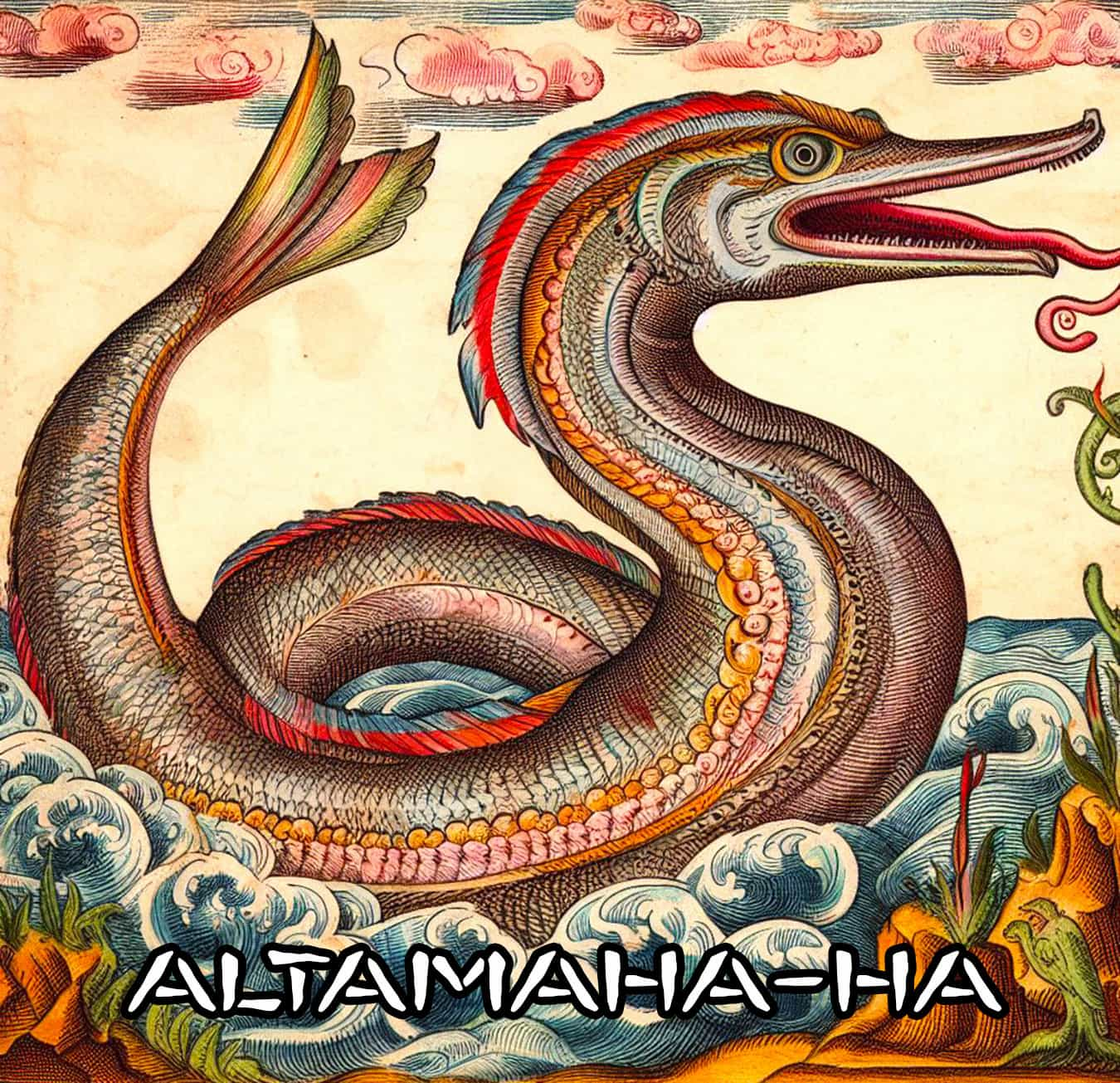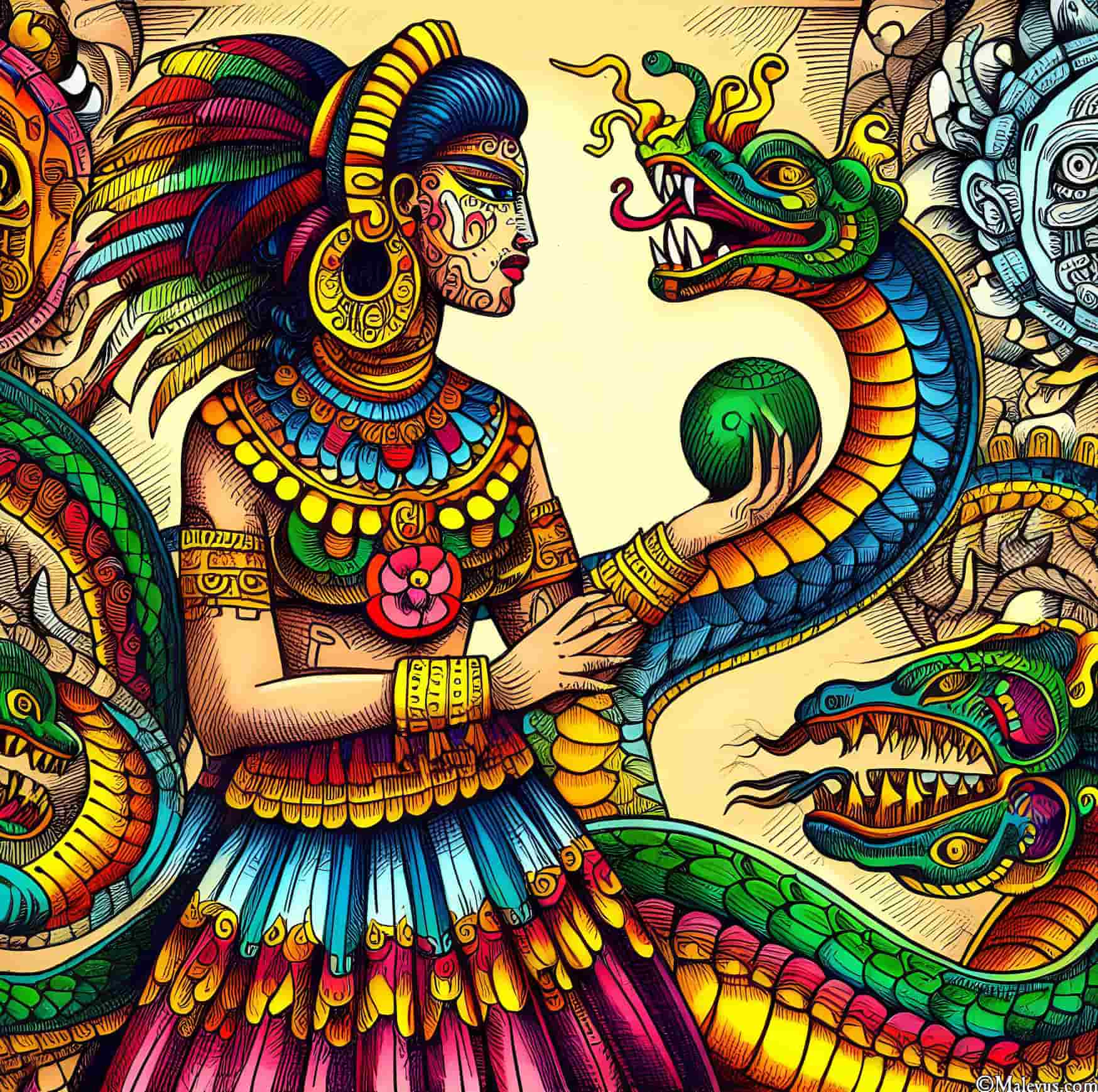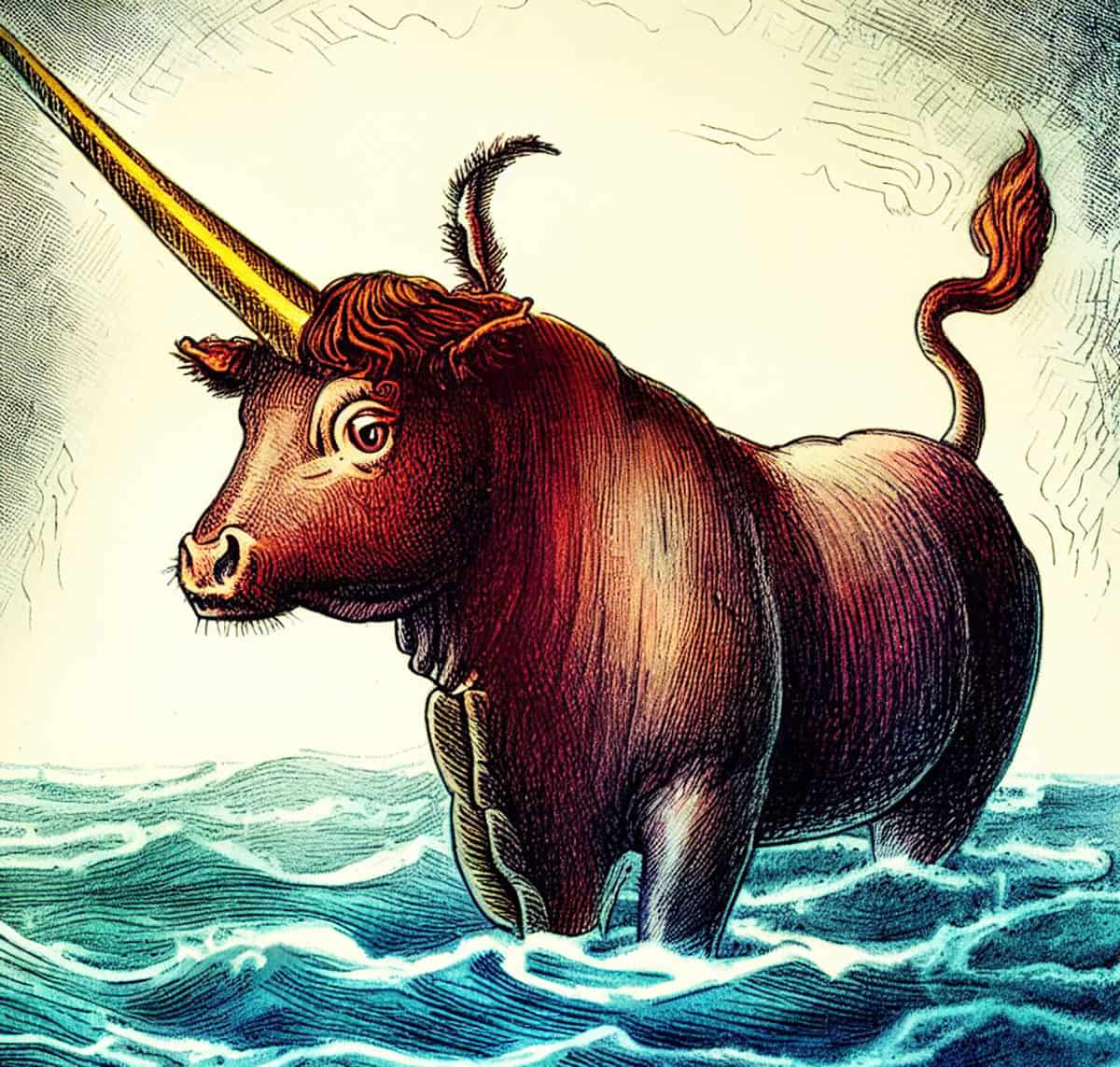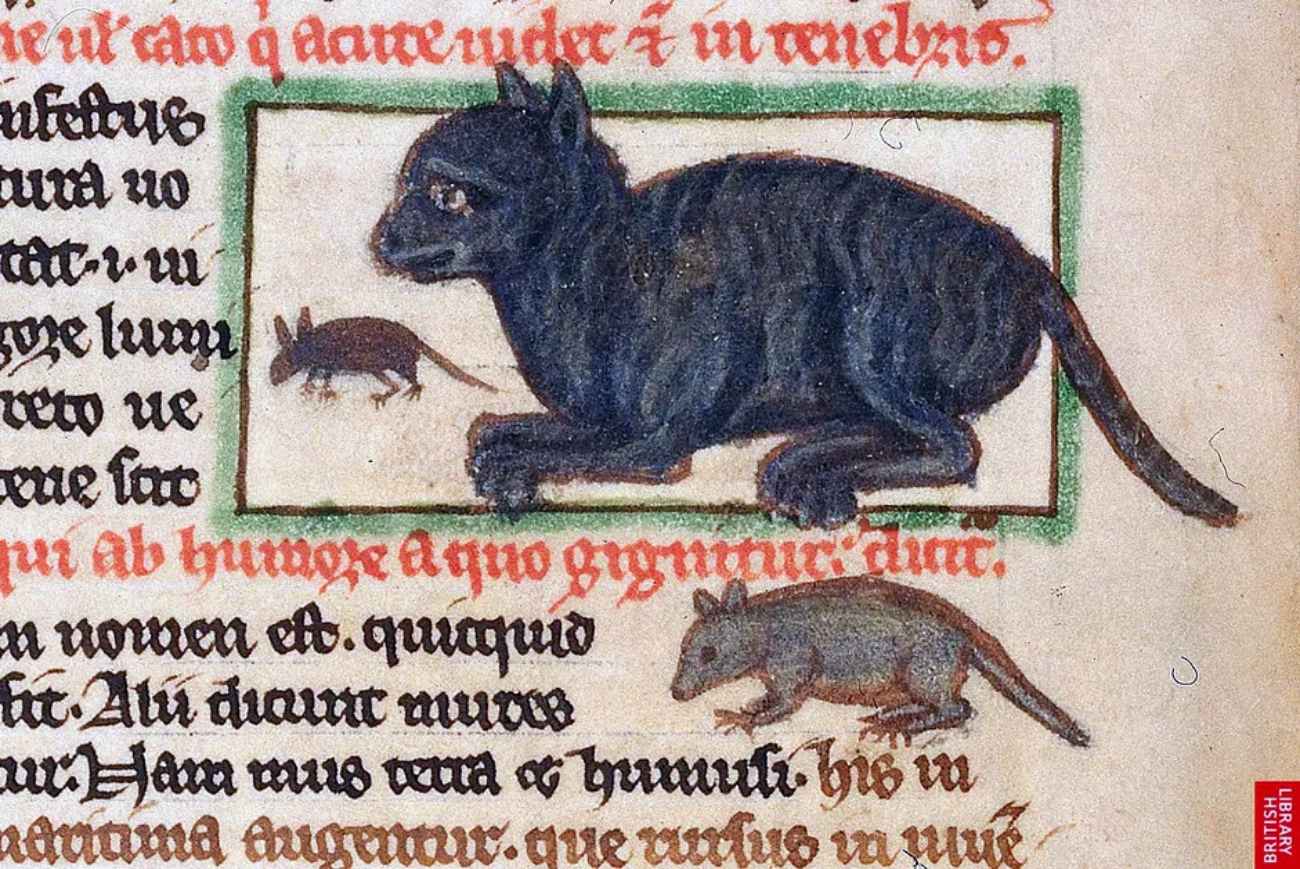One huge African antelope species is known as the catoblepas (from ancient Greek: καταβλέπω, meaning “one who looks downwards”). It’s a mythological beast that looks like a black buffalo, but only its head is so massive that its neck is permanently bowed. Those unlucky enough to face its gaze supposedly perish on the spot. Pliny the Elder brought attention to this species, and Claude Aelian and other Renaissance thinkers like Leonardo da Vinci built on his depiction. A literary metaphor of human foolishness, the catoblepas occurs in the writings of Gustave Flaubert and others of the 19th and 20th centuries, as well as in role-playing games and video games.
What Is the Catoblepas?

Catoblepas is composed of a bovine body and a porcine head. The scales on its back provide protection, and it keeps its head in a low position at all times. Its presence alone was enough to turn humans to stone, and its breath could kill.
Pliny characterized it as a slow-moving, medium-sized monster with a hefty head that was always aimed downward. Like the basilisk, he thought its glare was deadly; thus, people were lucky that its skull was so heavy.
Catoblepas was an herbivore around the size of a bull, according to Claudius Aelianus. He said it had a thick, bushy forehead, a thin, long body, bloodshot eyes, and scales on its back. The beast could only glance down because of the weight of the head. Its breath was venomous since it ate dangerous plants, yet its stare was harmless (or not lethal), according to his account.

Legend of the Catoblepas
According to legend, the catoblepas was initially mentioned by Pliny the Elder, who located it far away in Ethiopia at the Nile’s headwaters.
“Among the Hesperian Æthiopians is the fountain of Nigris, by many, supposed to be the head of the Nile. I have already mentioned the arguments by which this opinion is supported. Near this fountain, there is found a wild beast, which is called the catoblepas; an animal of moderate size, and in other respects sluggish in the movement of the rest of its limbs; its head is remarkably heavy, and it only carries it with the greatest difficulty, being always bent down towards the earth. Were it not for this circumstance, it would prove the destruction of the human race; for all who behold its eyes, fall dead upon the spot.”
— Natural History, Book VIII, Chapter 32, by Pliny the Elder
Second to Charles Darwin, Claudius Aelianus mentioned it in his book On the Nature of Animals. He transforms the herbivore catoblepas into a domestic bull-sized creature with a thick mane, slanted and bloodshot eyes, and heavy eyelids. According to this account, its breath is poisonous and may convert living things into stone, yet its gaze is harmless.
It was also shown as an Ethiopian animal in the notebooks of Leonardo da Vinci.
“It is found in Ethiopia, near the Nigricapo source. It’s not a very large animal; it is flabby in all its parts, and its head is so big that it carries it with difficulty, so much so that it always leans towards the ground. Otherwise, it would be a great scourge for man; anyone upon whom it fixes its gaze dies immediately.”
— The Notebooks of Leonardo Da Vinci
The catoblepas, mentioned in Gustave Flaubert’s “The Temptation of Saint Anthony,” illustrates its destructive nature:
“Fat, melancholic, wild, I remain constantly feeling the warmth of the mud beneath my belly. My skull is so heavy that I cannot lift it. I roll it around me, slowly; and with my jaw half-open, I tear with my tongue the poisonous herbs soaked in my breath. Once, I devoured my own legs without realizing it.”
— Gustave Flaubert
Origin of the Catoblepas

French zoologist Georges Cuvier speculated that the wildebeest, tainted by the basilisk and the gorgons, may have inspired the ancients to create such a beast. Based on a comparison of the wildebeest’s (Connochaetes taurinus) physical characteristics with those described in classical writings, it has been suggested that this species may be the one that corresponds to the catoblepas.
Bestiaries were collections of animal descriptions that featured both actual and made-up creatures. The authors of these works have only heard rumors about the animals’ traits before creating their works of art. These were often described by stating something like “this part resembles that of such animal,” and the artist would then draw a faithful representation of the remark.
However, the wildebeest is responsible for spreading the herpesvirus responsible for malignant catarrhal fever in cattle, which is called Alcelaphine gammaherpesvirus 1 (AlHV-1). Although wildebeests show no symptoms of the virus, it may be fatal to other animals. This would be the case if the catoblepas really did have a toxic breath or a fatal glare.
British anatomist Joshua Brookes established a now-defunct genus in 1928, from the Catoblepas operculatus coined in the 1830s for the black wildebeest. Most likely because the black wildebeest is similar to the catoblepas described in ancient texts. However, rather than the black wildebeest seen in southern Africa, these descriptions are more likely to match the common wildebeest with a range closer to the Mediterranean, the Greco-Roman environment.
Books and Plays on Catoblepas
- In “The Fourth Book,” Chapter 64 (LXIIII), François Rabelais included the “catoblepas” among a list of poisonous creatures.
- Philip Sidney‘s “The Countess of Pembroke’s Arcadia” makes reference to a catoblepas.
- In Gustave Flaubert‘s 1874 edition of “The Temptation of Saint Anthony,” the catoblepas is described at length as follows:
“The Catoblepas, a black buffalo, with a hog’s head hanging down to the ground, attached to its shoulders by a thin, long, flabby neck like a gutted intestine. It lies completely flat; and its feet disappear under the enormous mane of coarse hairs that covers its face.”
“The Cynocephali bark, the Sciapods lie down, the Blemmyes work, the Pygmies argue, the Astomi sob, the Unicorn neighs, the Mantichore roars, the Griffin paws the ground, the Basilisk hisses, the Phoenix flies, the Sadhuzag emits sounds, the Catoblepas sighs.”
- Chapter III from “Mount Analogue” by the late René Daumal:
Can one dream of gnomes, giants, hydras, catoblepas that can compete in power and mystery with a glacier, with the smallest little glacier?
- When Henry de Montherlant writes about a small child riding the train in “La Petite Infante de Castille,” he paints a realistic picture of the experience.
“She spread bread and pieces of meat on her apron and ate them, grabbing them with both hands. I, imagining her with divine stupidity, thought she would, like the Catoblepas, devour the tips of her fingers without realizing it.”
- In the 77 BC Egyptian setting of Lindsey Davis‘ book “Alexandria,” the “legendary Catoblepas” is among the “main characters who are not mentioned but deserve a mention.”
- Some of Rick Riordan‘s heroes encounter a swarm of Catoblepas in Venice in “The House of Hades,” (2013) the fourth novel in the Heroes of Olympus series.
A Word About Video Games
- Multiple Castlevania and Final Fantasy games include catoblepas as a monster.
- The Catablepon, undoubtedly modeled after the Catoblepas, can be encountered in a dungeon in the MMORPG RuneScape.
- Princess Adda the White enjoys raw catoblepas flesh in The Witcher.
Dungeons and Dragons
The Catoblepas has been a playable monster in Dungeons & Dragons since the game’s inception in 1977. Its design was clearly influenced by this mythical beast described by ancient Greek and Roman writers. Catoblepas are sometimes held by strong demonic magicians, the monarchs of Zakhara, and others in the Forgotten Realms campaign setting. A dangerous meal known as “death cheese” is made from the milk of some of these creatures.
Aurora’s Whole Realms Catalogue, a book on the Forgotten Realms written by Marco Volo and released in the 1990s, states that death cheese is prepared using Catoblepas milk from the marshes on the outskirts of Cormyr. Catoblepas is defined as follows in the Monster Manual II:
“An odd creature that dwells in marshes and dismal swamps… it is usually a herbivore… but once a month, usually under the light of a full moon, it hunts for meat to supplement its diet of reeds and grasses.”
Yu-Gi-Oh!
One card in the Yu-Gi-Oh! card game is titled “Catoblepas and the Witch of Fate,” and it depicts a little witch sitting on top of a dozing Catoblepas.
The second card is titled “Catoblepas, Familiar of the Evil Eye.”






